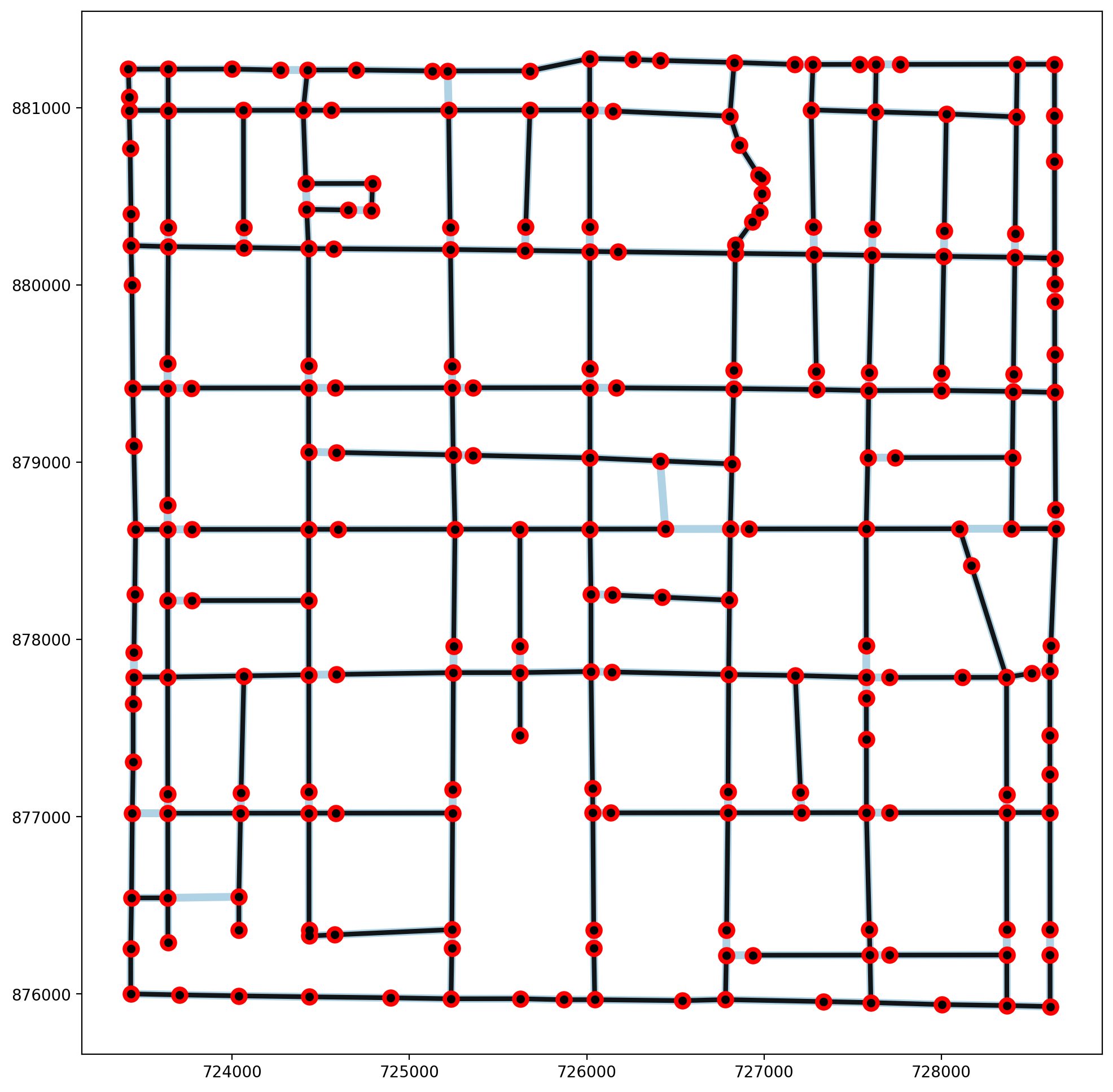This page was generated from notebooks/spanning-trees.ipynb.
Interactive online version:
If any part of this notebook is used in your research, please cite with the reference found in README.md.
Network spanning trees¶
Understanding minimum & maximum spanning trees in spaghetti¶
Author: James D. Gaboardi jgaboardi@gmail.com
This notebook demonstrates minimum & maximum spanning trees for the following:
Elementary geometric objects
Synthetic networks
An empirical example
[1]:
%config InlineBackend.figure_format = "retina"
[2]:
%load_ext autoreload
%autoreload 2
%load_ext watermark
%watermark
Last updated: 2022-11-01T23:21:50.082509-04:00
Python implementation: CPython
Python version : 3.10.6
IPython version : 8.6.0
Compiler : Clang 13.0.1
OS : Darwin
Release : 22.1.0
Machine : x86_64
Processor : i386
CPU cores : 8
Architecture: 64bit
[3]:
import geopandas
import libpysal
from libpysal import cg
import matplotlib
import matplotlib.pyplot as plt
import spaghetti
%matplotlib inline
%watermark -w
%watermark -iv
Watermark: 2.3.1
geopandas : 0.12.1
json : 2.0.9
spaghetti : 1.6.8
libpysal : 4.6.2
matplotlib: 3.6.1
/Users/the-gaboardi/miniconda3/envs/py310_spgh_dev/lib/python3.10/site-packages/spaghetti/network.py:39: FutureWarning: The next major release of pysal/spaghetti (2.0.0) will drop support for all ``libpysal.cg`` geometries. This change is a first step in refactoring ``spaghetti`` that is expected to result in dramatically reduced runtimes for network instantiation and operations. Users currently requiring network and point pattern input as ``libpysal.cg`` geometries should prepare for this simply by converting to ``shapely`` geometries.
warnings.warn(f"{dep_msg}", FutureWarning)
Helper functions for plotting and labeling¶
[4]:
def plotter(net_arcs, net_verts, mst_arcs=None, mst_verts=None, label=True):
"""Convenience plotting function."""
plot_mst, msize, vert_z = False, 40, 3
if hasattr(mst_arcs, "T") and hasattr(mst_verts, "T"):
plot_mst, msize, vert_z = True, 20, 4
# set arc keyword arguments
arc_kws = {"column":"comp_label", "cmap":"Paired"}
# set the streets as the plot base
base_kws = {"figsize":(12, 12)}
base_kws.update(arc_kws)
base = net_arcs.plot(lw=5, alpha=.9, **base_kws)
# create vertices keyword arguments for matplotlib
ax_kwargs = {"ax":base}
net_verts.plot(color="k", markersize=msize, zorder=vert_z, **ax_kwargs)
# plot spanning trees
if plot_mst:
mst_arcs.plot(color="k", lw=3, zorder=2, alpha=.9, **ax_kwargs)
mst_verts.plot(color="r", markersize=100, zorder=3, **ax_kwargs)
# label network/tree elements
if label:
if not plot_mst:
arc_labels(net_arcs, base, 12)
vert_labels(net_verts, base, 14)
else:
arc_labels(mst_arcs, base, 12)
vert_labels(mst_verts, base, 14)
def arc_labels(a, b, s):
"""Label each network arc."""
def _lab_loc(_x):
"""Helper for labeling network arcs."""
return _x.geometry.interpolate(0.5, normalized=True).coords[0]
kws = {"size": s, "ha": "center", "va": "bottom"}
a.apply(lambda x: b.annotate(text=x.id, xy=_lab_loc(x), **kws), axis=1)
def vert_labels(v, b, s):
"""Label each network vertex."""
def _lab_loc(_x):
"""Helper for labeling vertices."""
return _x.geometry.coords[0]
kws = {"size": s, "ha": "left", "va": "bottom", "weight": "bold"}
v.apply(lambda x: b.annotate(text=x.id, xy=_lab_loc(x), **kws), axis=1)
1. Elementary geometric objects¶
1.a Simple cross¶
[5]:
bounds = (0,0,2,2)
h, v = 1, 1
cross = spaghetti.regular_lattice(bounds, h, nv=v, exterior=False)
lines = geopandas.GeoDataFrame(geometry=cross)
[6]:
ntw = spaghetti.Network(in_data=lines)
elem_kws = {"vertices":True, "arcs":True}
vertices, arcs = spaghetti.element_as_gdf(ntw, **elem_kws)
[7]:
plotter(arcs, vertices, mst_arcs=None, mst_verts=None)
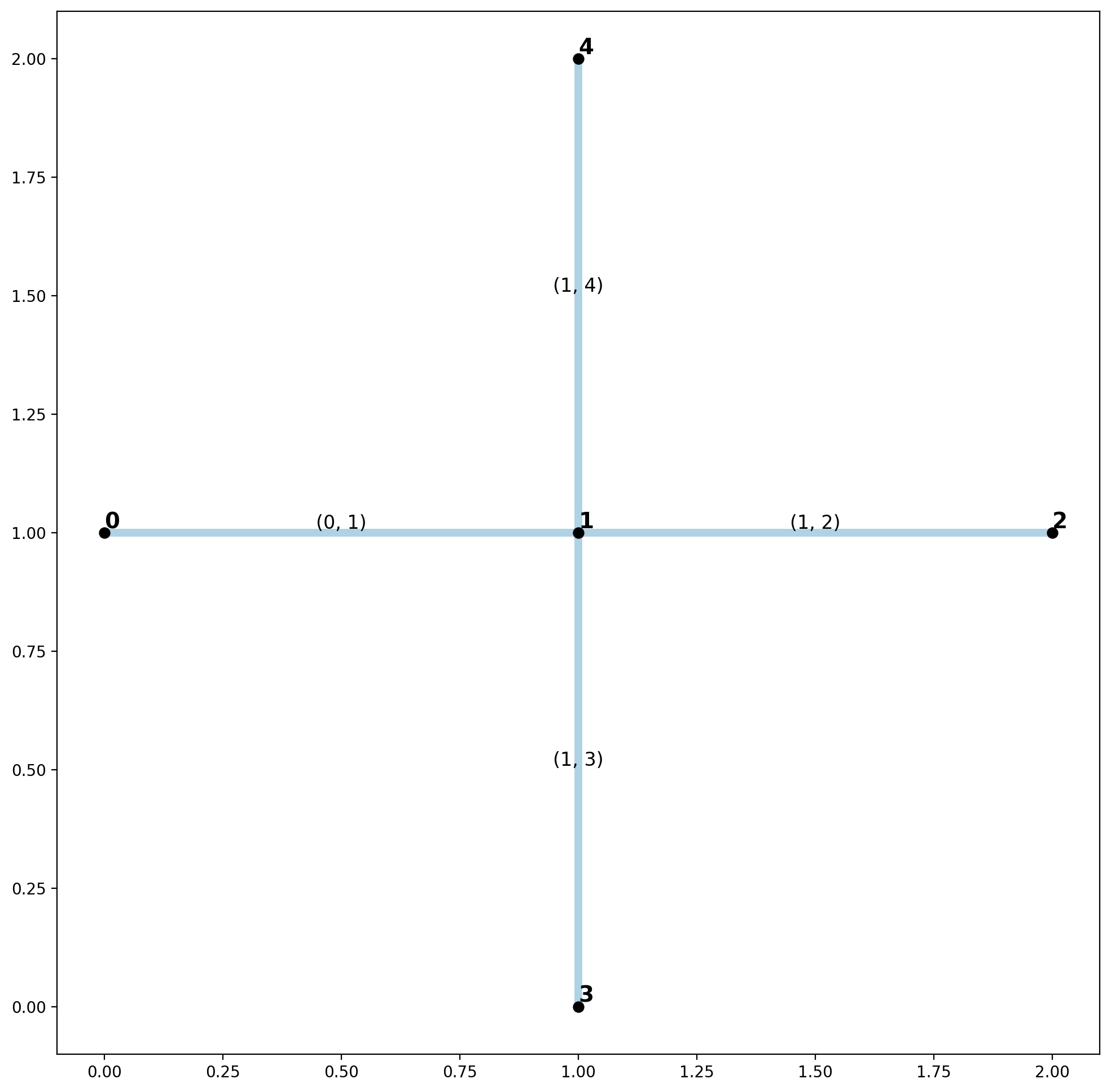
Minimum Spanning Tree
[8]:
minst_net = spaghetti.spanning_tree(ntw)
mst_verts, mst_arcs = spaghetti.element_as_gdf(minst_net, **elem_kws)
plotter(arcs, vertices, mst_arcs=mst_arcs, mst_verts=mst_verts)
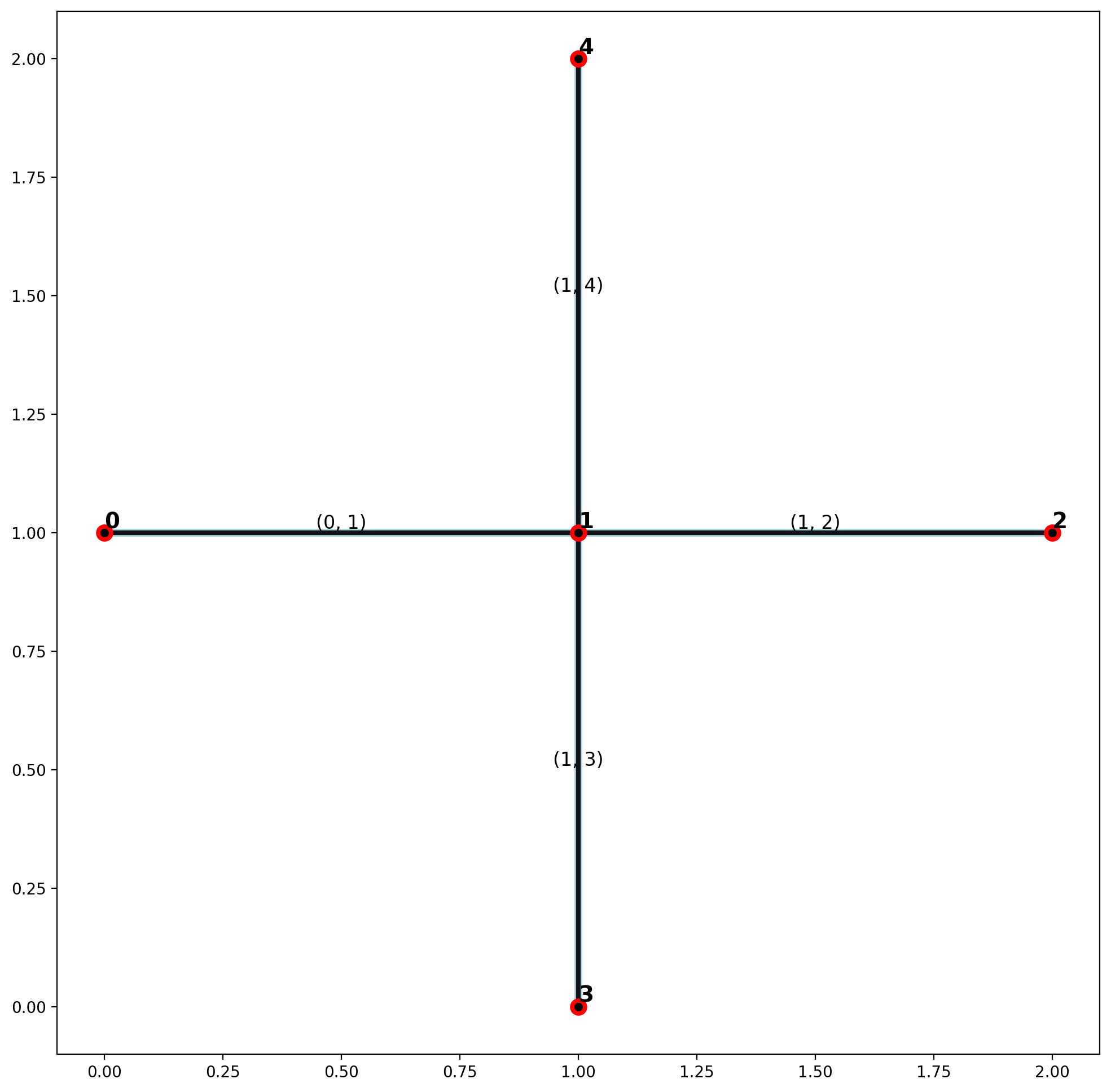
Maximum Spanning Tree
[9]:
maxst_net = spaghetti.spanning_tree(ntw, maximum=True)
mst_verts, mst_arcs = spaghetti.element_as_gdf(maxst_net, **elem_kws)
plotter(arcs, vertices, mst_arcs=mst_arcs, mst_verts=mst_verts)
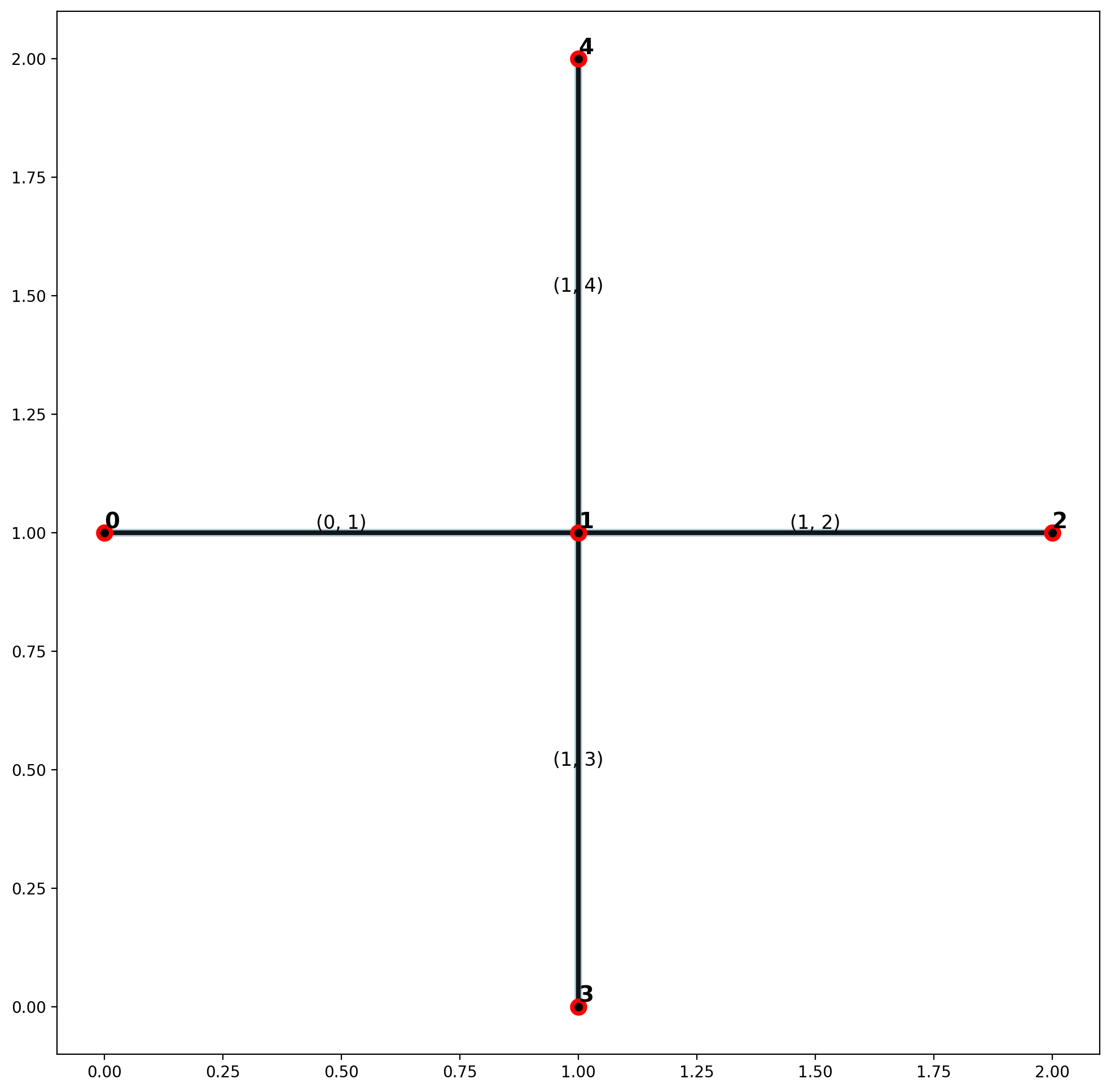
No cycles can be formed with this simple intersection. Therefore, all network arcs are both members of the minimum and maximum spanning trees.
1.b Pythagorean triple triangle¶
[10]:
p00 = cg.Point((0,0))
lines = [cg.Chain([p00, cg.Point((0,3)), cg.Point((4,0)), p00])]
[11]:
ntw = spaghetti.Network(in_data=lines)
elem_kws = {"vertices":True, "arcs":True}
vertices, arcs = spaghetti.element_as_gdf(ntw, **elem_kws)
[12]:
plotter(arcs, vertices, mst_arcs=None, mst_verts=None)
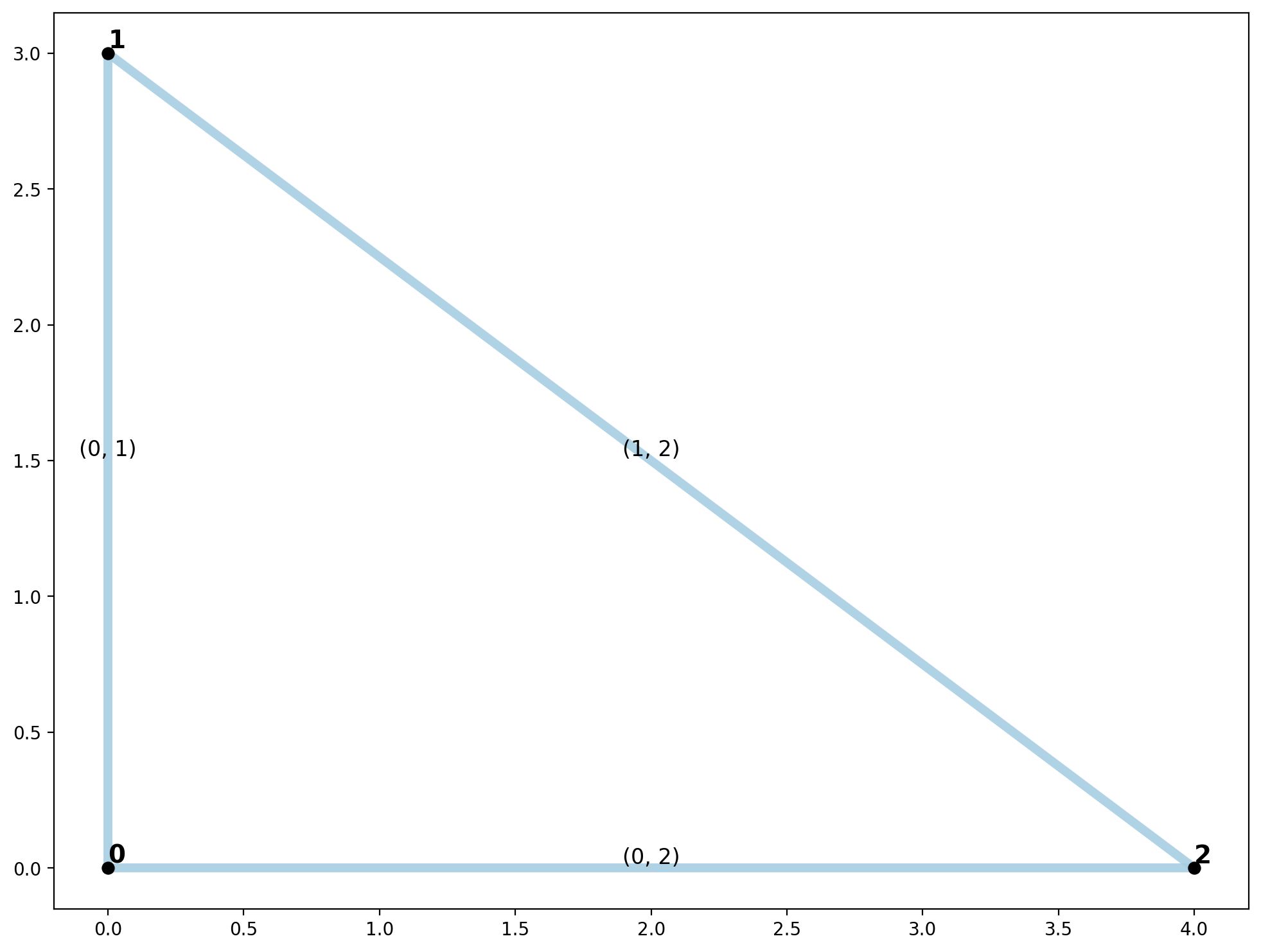
Minimum Spanning Tree
[13]:
minst_net = spaghetti.spanning_tree(ntw)
mst_verts, mst_arcs = spaghetti.element_as_gdf(minst_net, **elem_kws)
plotter(arcs, vertices, mst_arcs=mst_arcs, mst_verts=mst_verts)
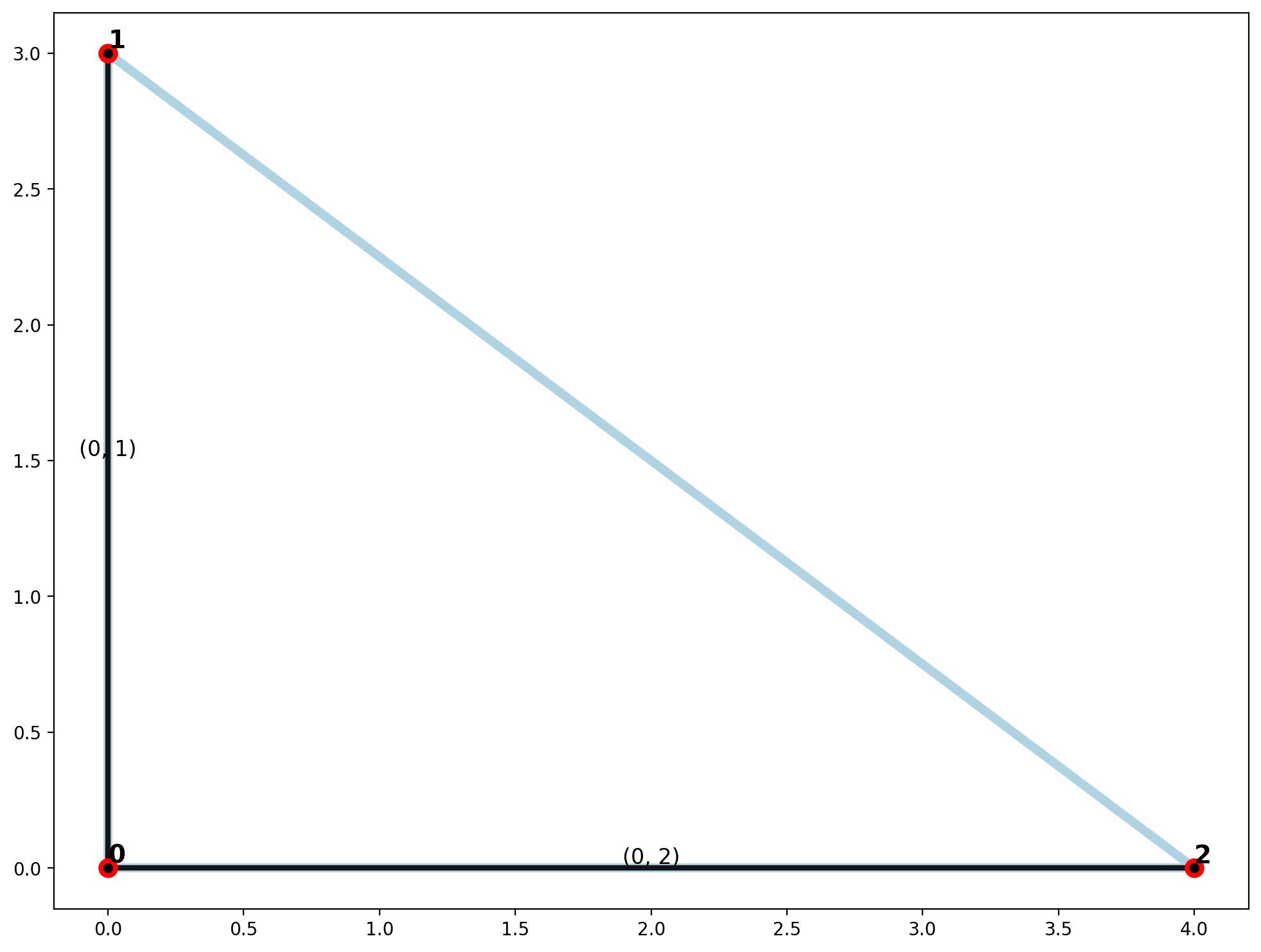
Maximum Spanning Tree
[14]:
maxst_net = spaghetti.spanning_tree(ntw, maximum=True)
mst_verts, mst_arcs = spaghetti.element_as_gdf(maxst_net, **elem_kws)
plotter(arcs, vertices, mst_arcs=mst_arcs, mst_verts=mst_verts)
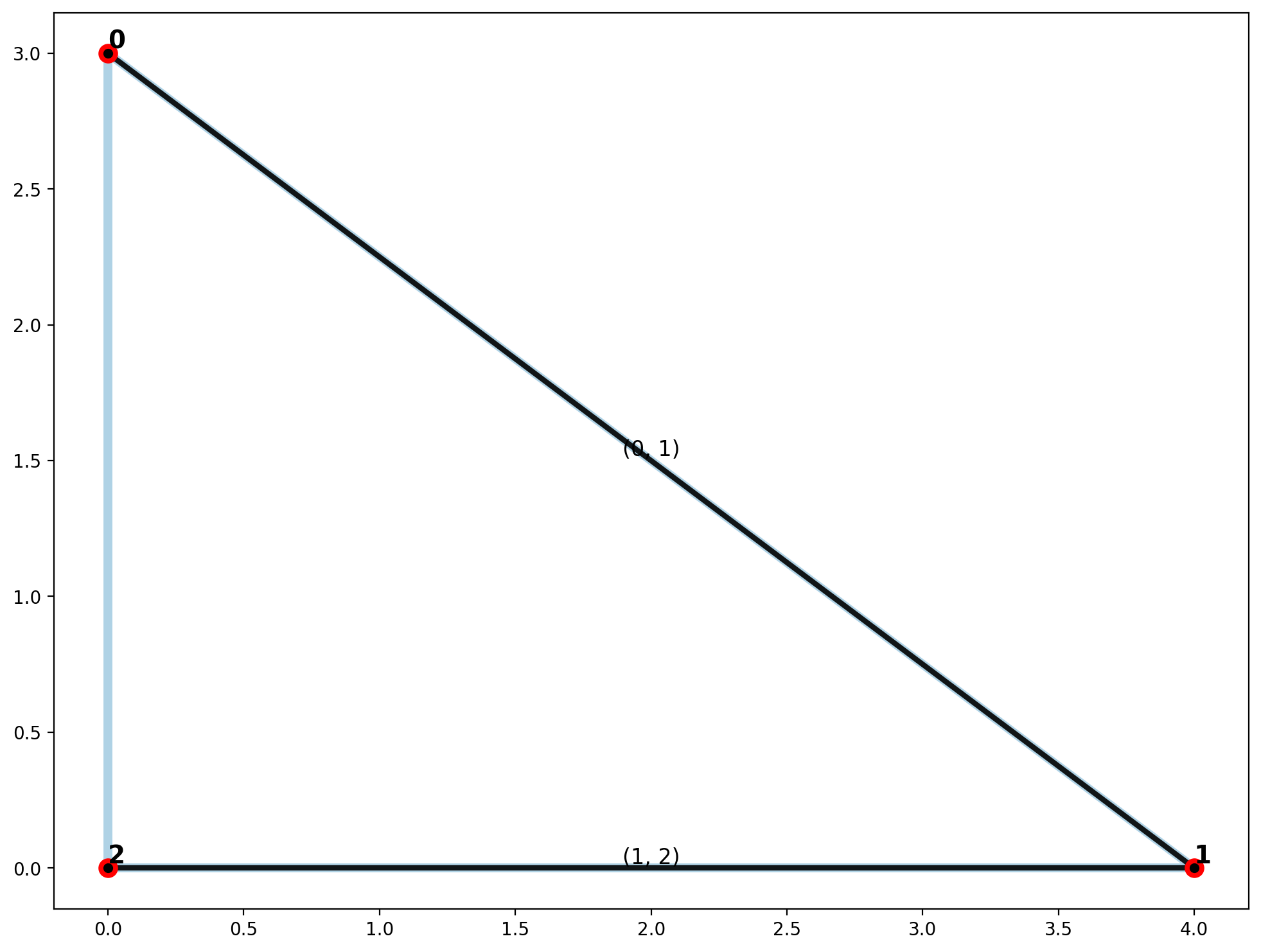
Due to the nature of a Pythagorean triple triangle, it is excellent for demonstrating the most basic example of a network cycle, and the difference between a minimum and maximum spanning tree.
2. Synthetic Networks¶
2.a Inspired by Figure 3.25 in Okabe and Sugihara (2012)¶
[15]:
p04, p94, p90 = cg.Point((0,4)), cg.Point((9,4)), cg.Point((9,0))
p33, p43 = cg.Point((3,3)), cg.Point((4,3))
# interior
lines = [cg.Chain([p04, p33, p00]), cg.Chain([p94, p43, p90]), cg.Chain([p33, p43])]
# exterior
lines += [cg.Chain([p00, p04, p94, p90, p00])]
[16]:
ntw = spaghetti.Network(in_data=lines)
elem_kws = {"vertices":True, "arcs":True}
vertices, arcs = spaghetti.element_as_gdf(ntw, **elem_kws)
[17]:
plotter(arcs, vertices, mst_arcs=None, mst_verts=None)
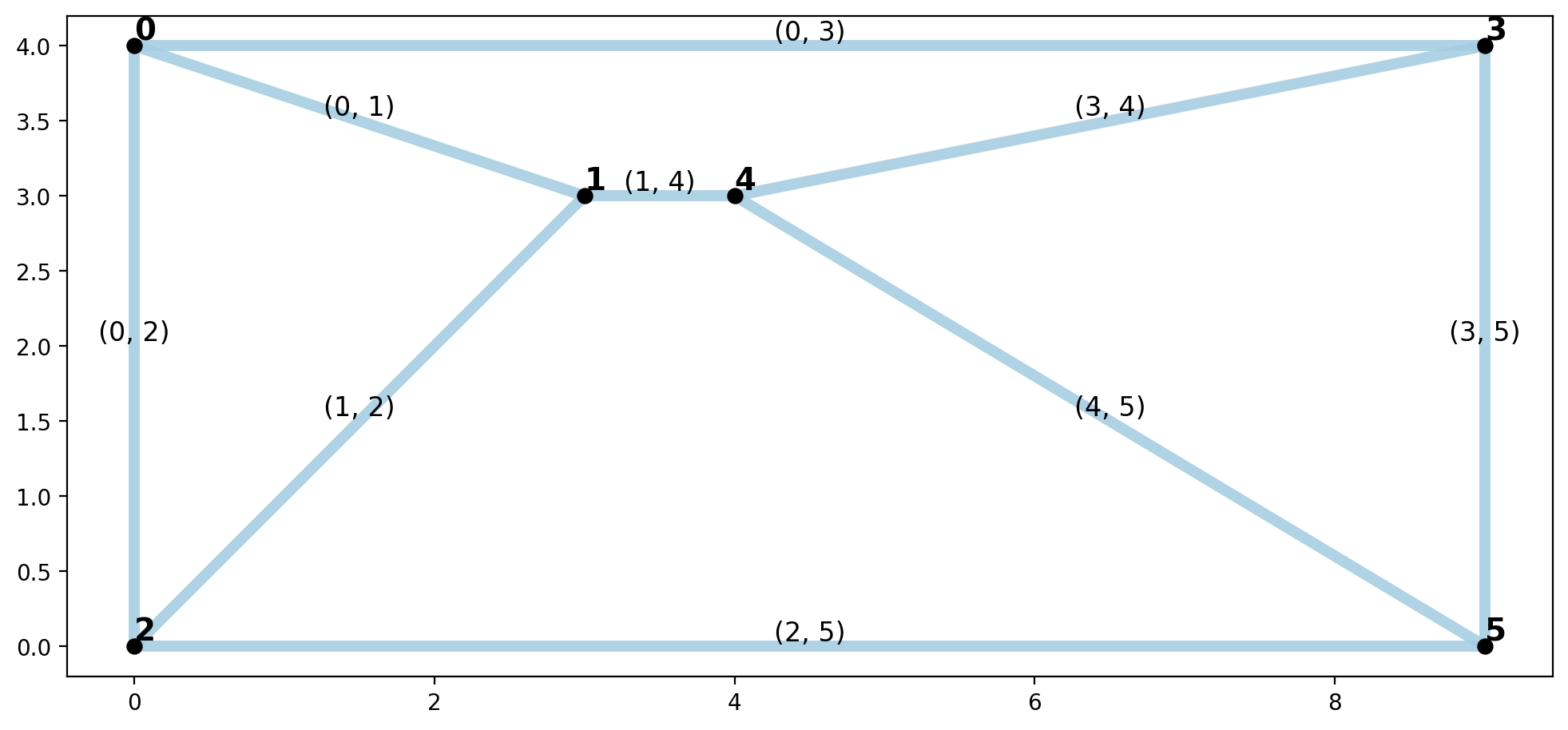
Minimum Spanning Tree
[18]:
minst_net = spaghetti.spanning_tree(ntw)
mst_verts, mst_arcs = spaghetti.element_as_gdf(minst_net, **elem_kws)
plotter(arcs, vertices, mst_arcs=mst_arcs, mst_verts=mst_verts)
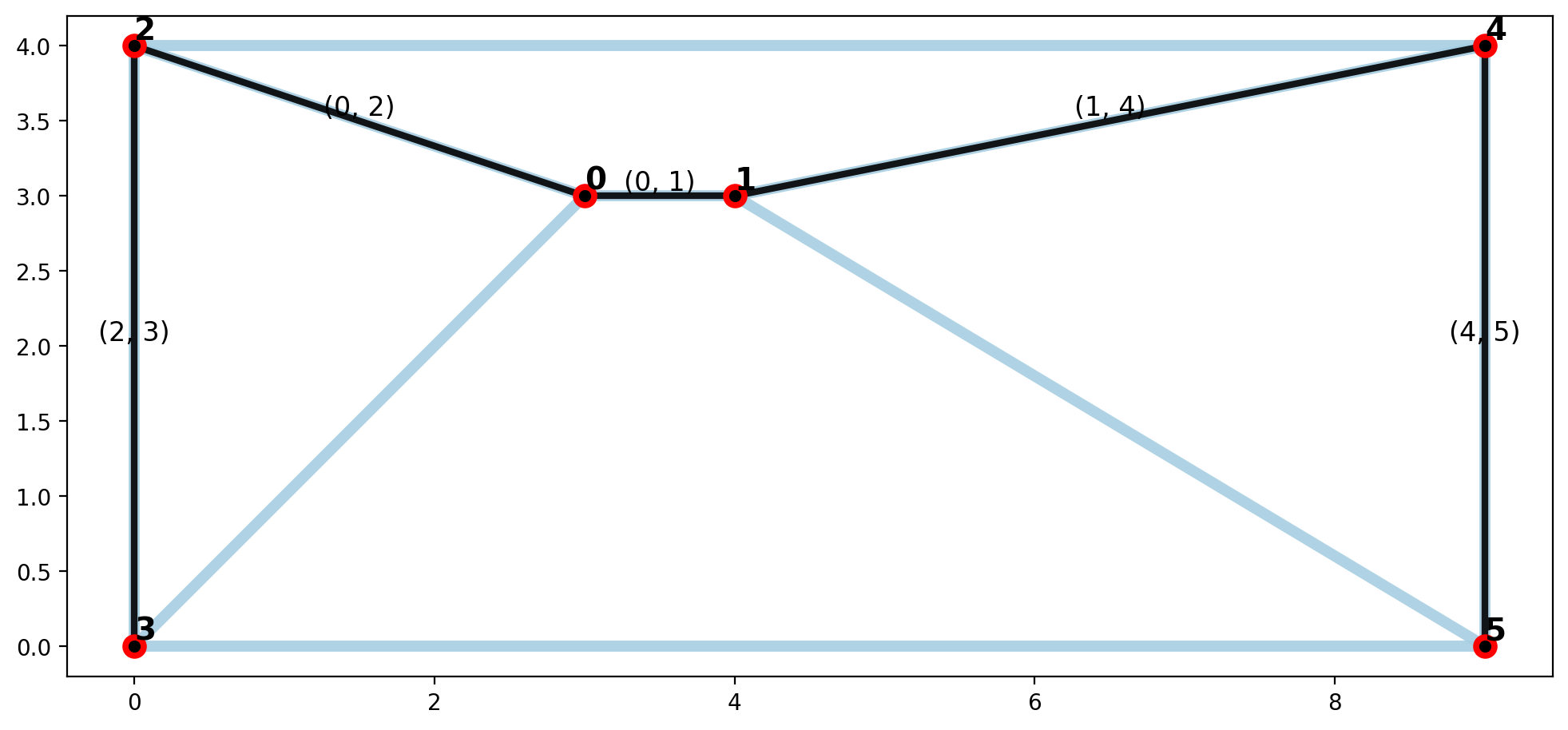
Maximum Spanning Tree
[19]:
maxst_net = spaghetti.spanning_tree(ntw, maximum=True)
mst_verts, mst_arcs = spaghetti.element_as_gdf(maxst_net, **elem_kws)
plotter(arcs, vertices, mst_arcs=mst_arcs, mst_verts=mst_verts)
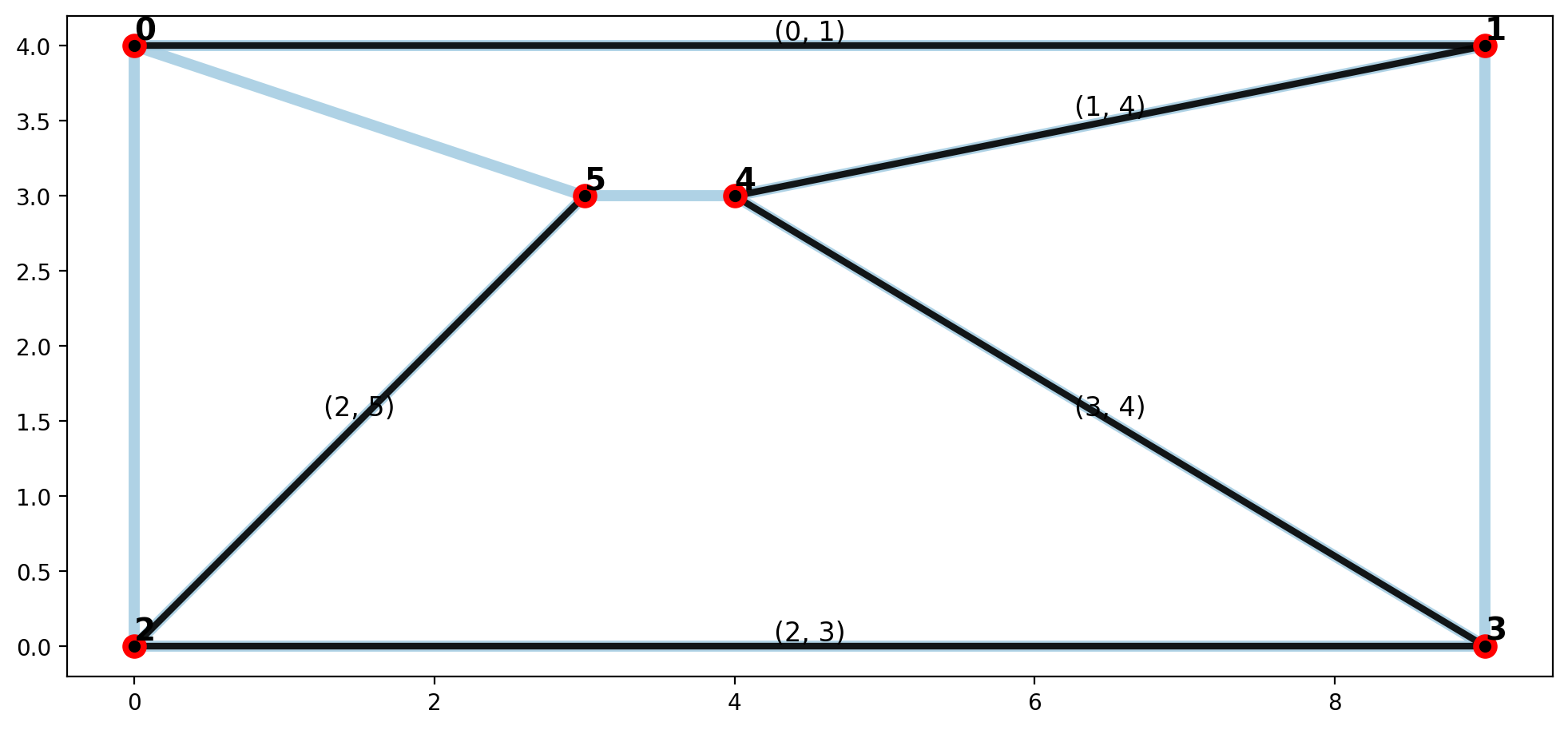
2.b 4x4 Regular lattice¶
[20]:
bounds = (0,0,3,3)
h, v = 2, 2
lattice = spaghetti.regular_lattice(bounds, h, nv=v, exterior=True)
ntw = spaghetti.Network(in_data=lattice)
vertices, arcs = spaghetti.element_as_gdf(ntw, **elem_kws)
[21]:
plotter(arcs, vertices, mst_arcs=None, mst_verts=None)
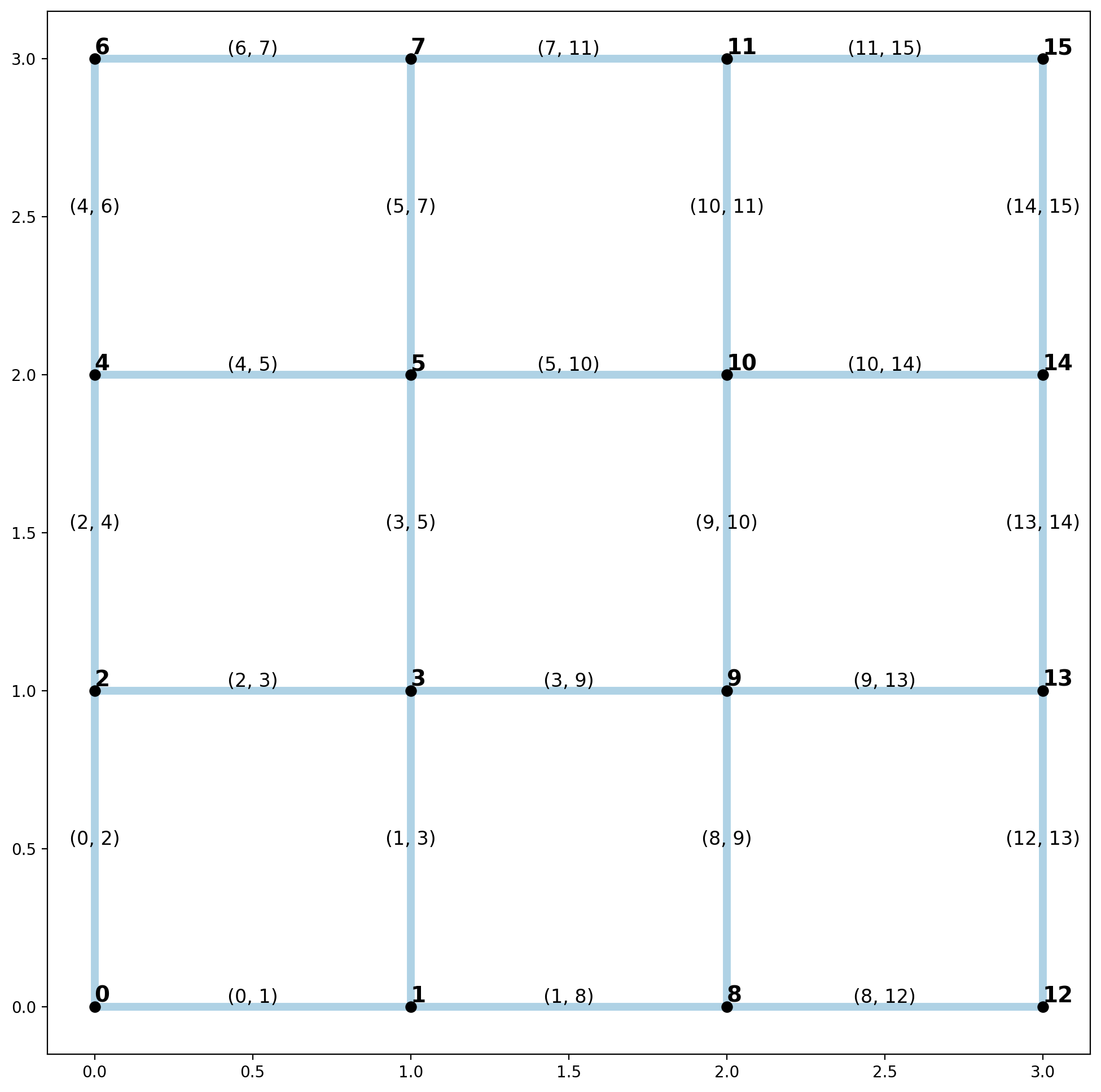
Minimum Spanning Tree
[22]:
minst_net = spaghetti.spanning_tree(ntw, maximum=False)
mst_verts, mst_arcs = spaghetti.element_as_gdf(minst_net, **elem_kws)
plotter(arcs, vertices, mst_arcs=mst_arcs, mst_verts=mst_verts)
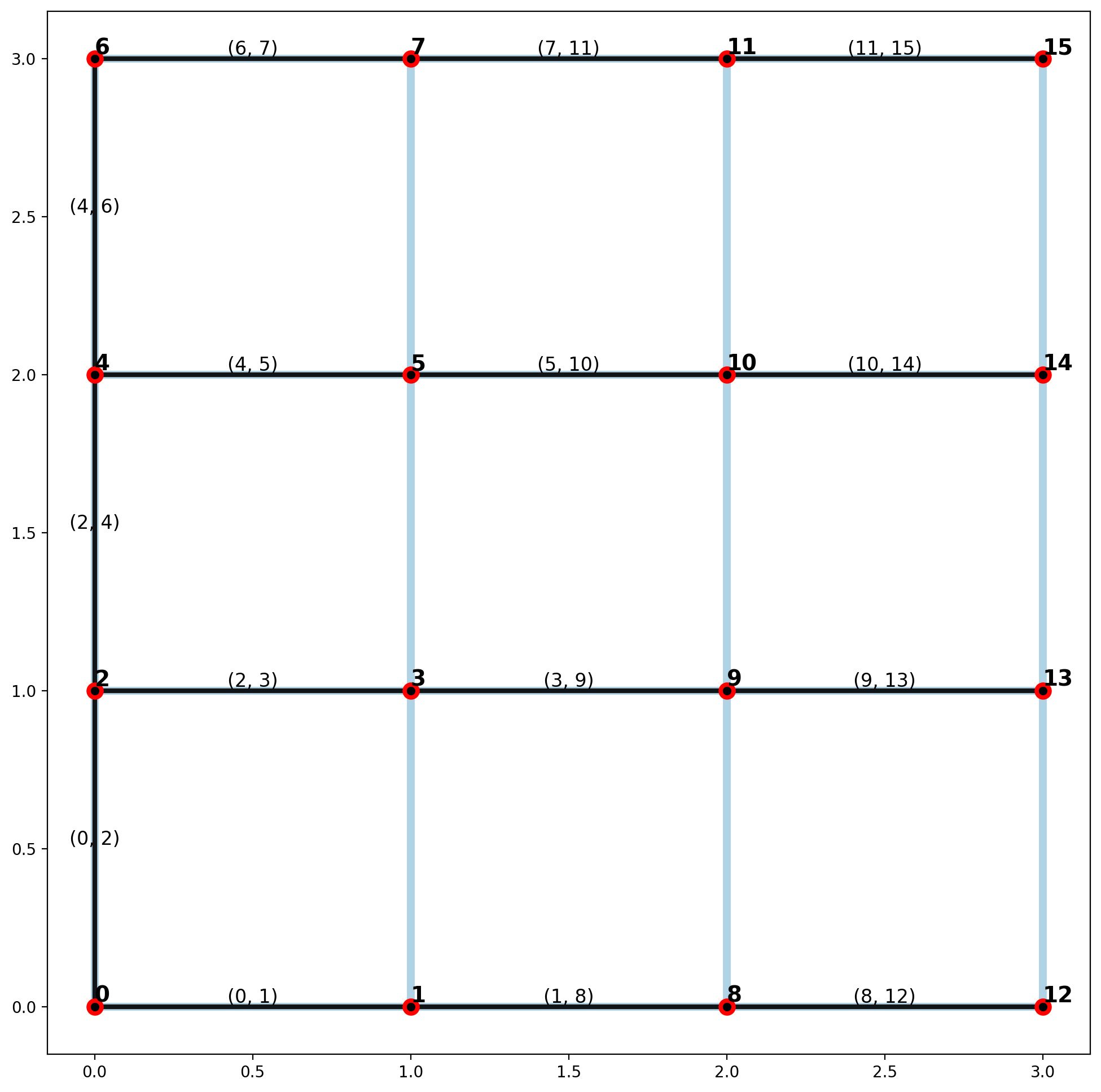
Maximum Spanning Tree
[23]:
maxst_net = spaghetti.spanning_tree(ntw, maximum=True)
mst_verts, mst_arcs = spaghetti.element_as_gdf(maxst_net, **elem_kws)
plotter(arcs, vertices, mst_arcs=mst_arcs, mst_verts=mst_verts)
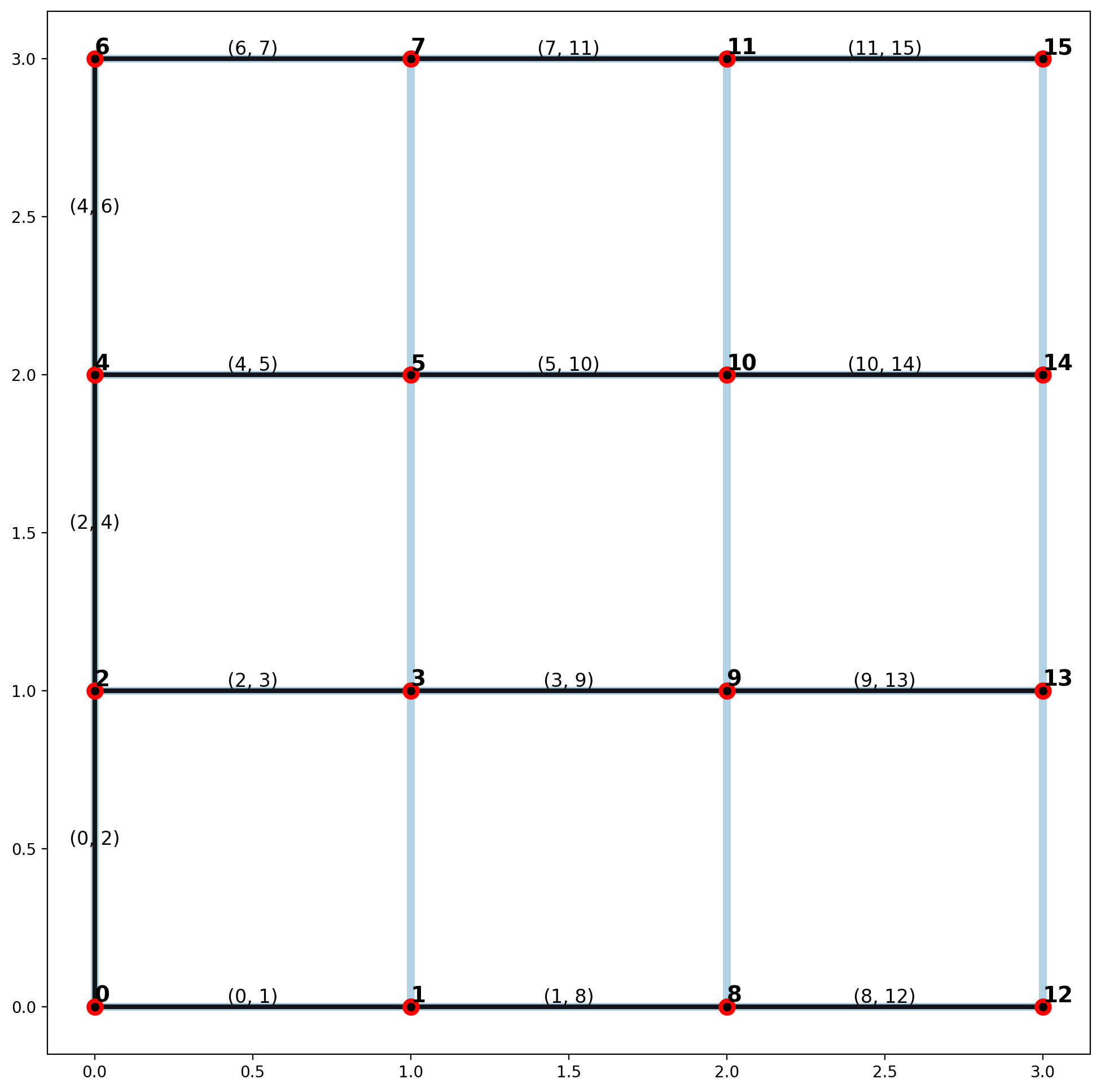
Since all network arcs in a regular lattice are equal in length, the minimum and maximum spanning trees will be equivalent, and are dependent on the start index for cycle search.
3. Emprical Example — geodanet/streets.shp¶
[24]:
ntw = spaghetti.Network(in_data=libpysal.examples.get_path("streets.shp"))
vertices, arcs = spaghetti.element_as_gdf(ntw, **elem_kws)
[25]:
plotter(arcs, vertices, mst_arcs=None, mst_verts=None, label=False)
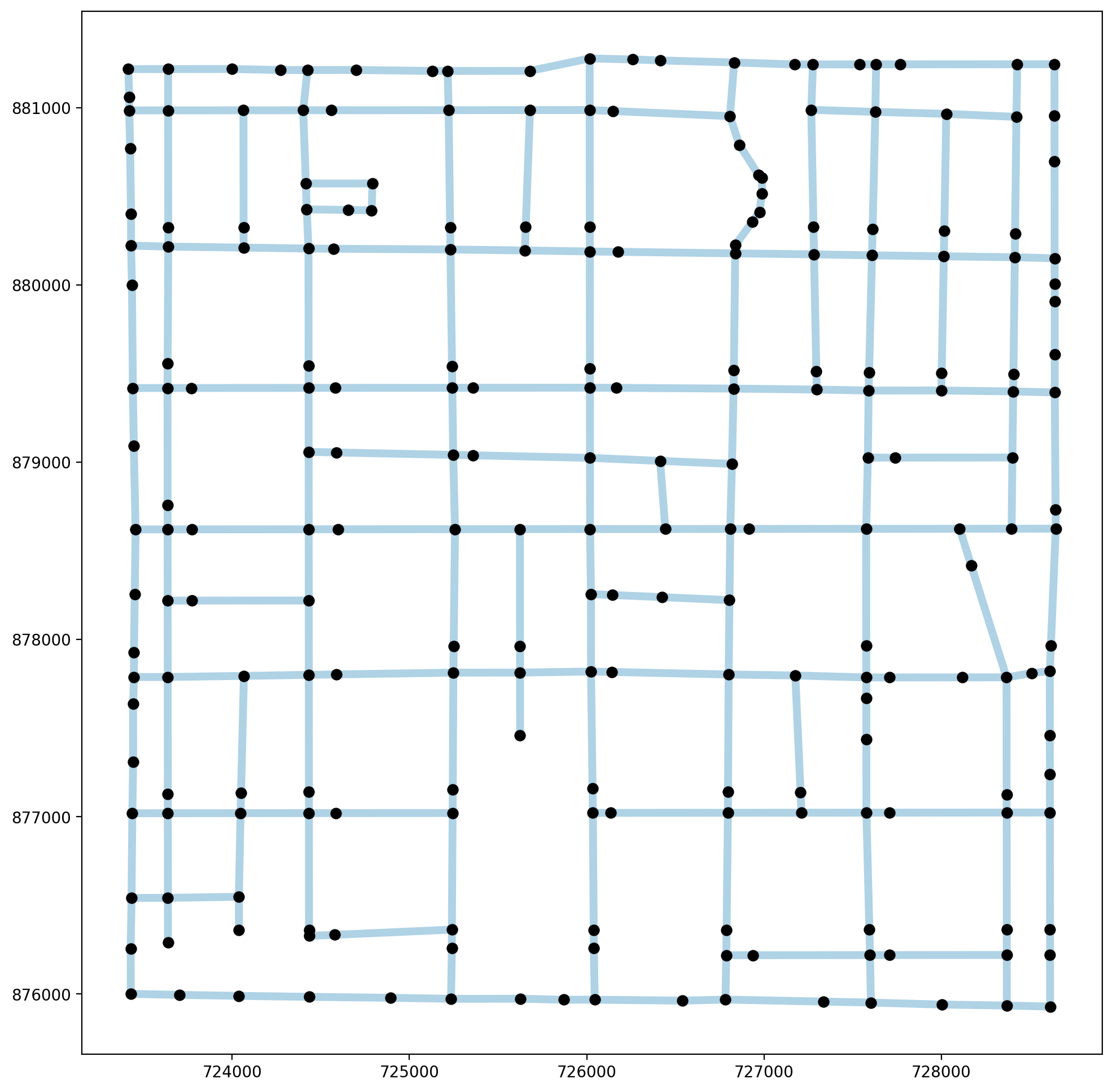
Minimum Spanning Tree
[26]:
minst_net = spaghetti.spanning_tree(ntw)
mst_verts, mst_arcs = spaghetti.element_as_gdf(minst_net, **elem_kws)
plotter(arcs, vertices, mst_arcs=mst_arcs, mst_verts=mst_verts, label=False)
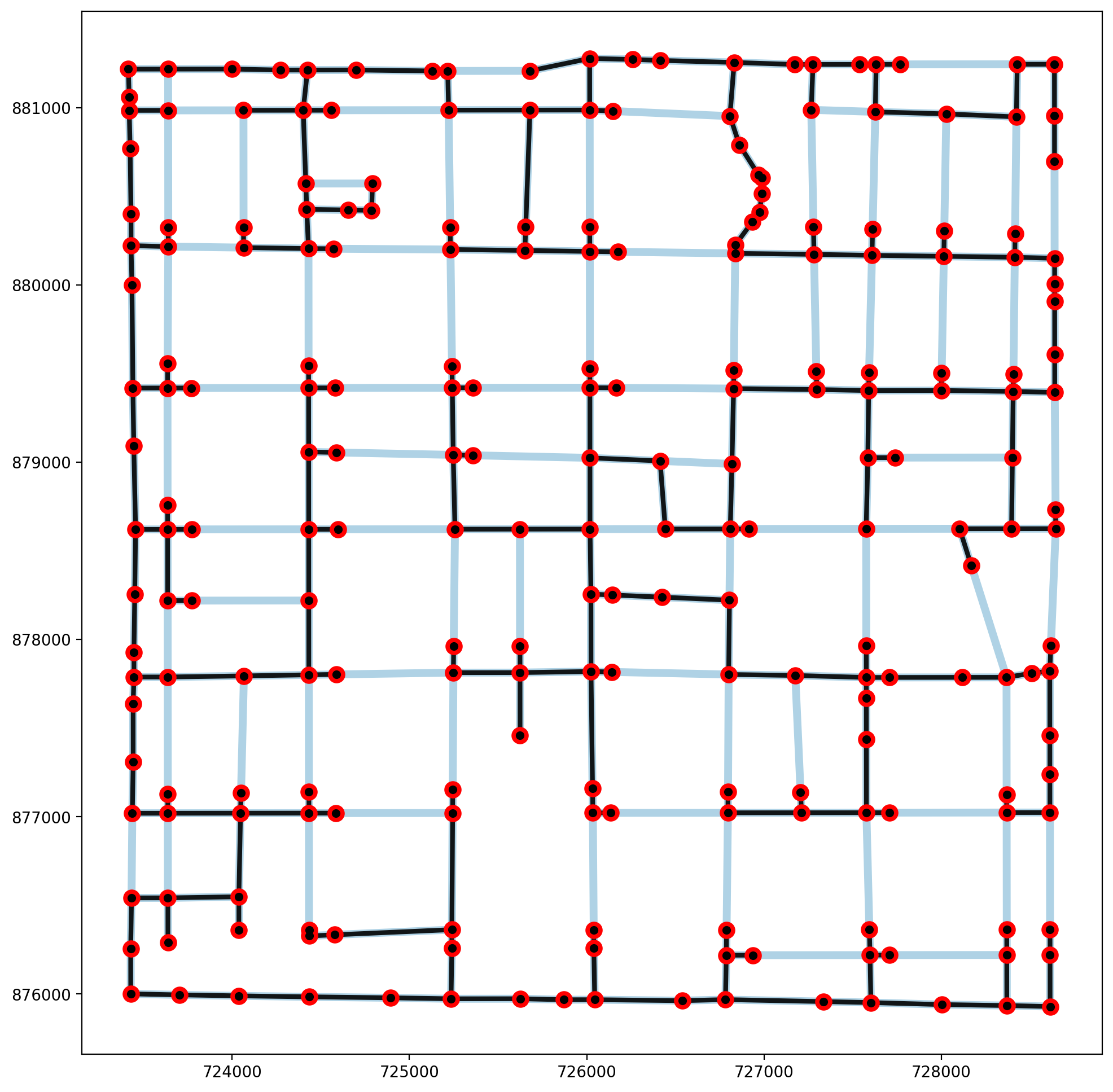
Maximum Spanning Tree
[27]:
maxst_net = spaghetti.spanning_tree(ntw, maximum=True)
mst_verts, mst_arcs = spaghetti.element_as_gdf(maxst_net, **elem_kws)
plotter(arcs, vertices, mst_arcs=mst_arcs, mst_verts=mst_verts, label=False)
